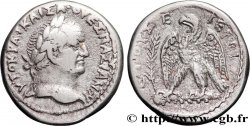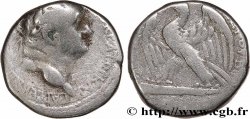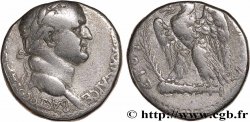brm_565686 - VESPASIANUS Denier
недоступный.
Товар уже продан в нашем интернет-магазине (2020)
Цена: : 250.00 €
Товар уже продан в нашем интернет-магазине (2020)
Цена: : 250.00 €
Тип Denier
Дата: 70
Монетный двор / Город: Roma
Металл: silver
Проба: 900 ‰
Диаметр: 18 mm
Ориентация осей монеты: 6 h.
Вес: 2,97 g.
Редкость: R2
Комментарии о состоянии
Exemplaire sur un petit flan. Frappe un peu molle au droit. Joli revers de style fin. Belle patine de collection avec des reflets doré
Ссылки в каталоге: :
Лицевая сторона
Аверс: легенда: IMP CAESAR VESPASIANVS AVG.
Аверс: описание: Tête laurée de Vespasien à droite (O*).
Аверс: перевод: “Imperator Cæsar Vespasianus Augustus”, (L'empereur césar Vespasien auguste).
Обратная сторона
Реверс: легенда: IVDAEA (À L'EXERGUE).
Реверс: Описание: La Judée voilée assise à droite ; derrière un trophée.
Реверс: перевод: “Iudæa”, (La Judée).
Комментарий
Poids léger. Rubans de type 3. Au droit, le portrait est réaliste et ressemble aux portraits plus massifs de l’empereur, plus tardifs. Peut-être l’émission a-t-elle débutée avant l’arrivée de l’empereur dans l’Urbs qui était absent de Rome depuis quatre ans. Ce type de revers n’a été frappé qu’en 70 pour l’or et l’argent (RIC. 15). Mais le style du portrait fait aussi penser à Lyon (RIC. 1118). La Judée est toujours assise à droite, voilée, le bras droit posé sur son genou et le bras gauche soutient le menton de la Province qui suivant les exemplaires, est plus ou moins penché vers l’avant dans une attitude de tristesse. Nous trouvons parfois de petites variations dans la représentation du trophée d’armes qui est constitué d’un casque, d’une cuirasse, de boucliers ronds au sol et de boucliers composites sur les bras du trophée .
Light weight. Type 3 ribbons. On the obverse, the portrait is realistic and resembles the later, more massive portraits of the emperor. Perhaps the issue began before the arrival of the emperor in the Urbs, who had been absent from Rome for four years. This type of reverse was only struck in 70 for gold and silver (RIC. 15). But the style of the portrait is also reminiscent of Lyon (RIC. 1118). Judea is always seated on the right, veiled, her right arm resting on her knee and her left arm supporting the chin of the Province, who, depending on the copy, is more or less leaning forward in an attitude of sadness. We sometimes find small variations in the representation of the trophy of arms, which consists of a helmet, a breastplate, round shields on the ground, and composite shields on the arms of the trophy.
Light weight. Type 3 ribbons. On the obverse, the portrait is realistic and resembles the later, more massive portraits of the emperor. Perhaps the issue began before the arrival of the emperor in the Urbs, who had been absent from Rome for four years. This type of reverse was only struck in 70 for gold and silver (RIC. 15). But the style of the portrait is also reminiscent of Lyon (RIC. 1118). Judea is always seated on the right, veiled, her right arm resting on her knee and her left arm supporting the chin of the Province, who, depending on the copy, is more or less leaning forward in an attitude of sadness. We sometimes find small variations in the representation of the trophy of arms, which consists of a helmet, a breastplate, round shields on the ground, and composite shields on the arms of the trophy.







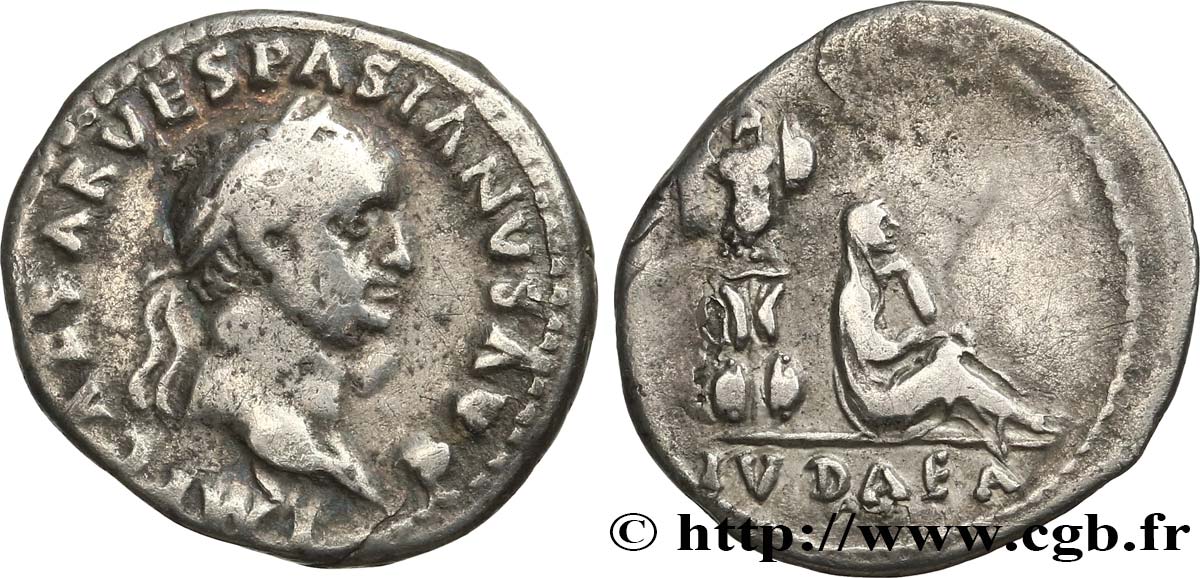
 Cообщить об ошибке
Cообщить об ошибке Распечатать страницу
Распечатать страницу Отправить мой выбор
Отправить мой выбор Задать вопрос
Задать вопрос Consign / sell
Consign / sell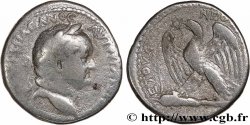
 Информация
Информация